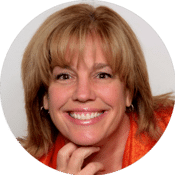The CEO secretly wants out so she can hike the Himalayan mountains. The financial planner daydreams of painting while filling out spreadsheets. The mother of three doesn’t know what she wants to become after her children leave the nest.
Have you ever wondered who you could become? What you might accomplish, the person you could evolve into, or the dreams you could bring to life? These musings about our future selves are not just daydreams; they tap into a psychological concept known as “possible selves.” Possible selves represent the many versions of our future selves that we see in our mind’s eye.
These concepts of who we could become encompass our aspirations, hopes, and dreams—and also our fears, anxieties, and uncertainties.
When Anxiety Threatens Your Ideal Self
Last month I saw Jade Simmons give a keynote address at the Entrepreneurial Excellence Forum for the Women Presidents Organization. As she played a grand piano on stage, Jade told the story of how anxiety put her possible future self in jeopardy. She saw herself as a classical pianist. That image was threatened by the anxiety that kept her from playing, or forced her to stop performing right in the middle of a show.
The way she found through those paralyzing moments was to tell stories to her audience. Speaking out loud helped her relax and gave her the space she needed to be able to resume playing. After the shows, her audience came up to her and told her that her stories were so meaningful and insightful. What was being reflected back to her was that her whole self—the one that told stories and the one that played piano—was magnificent.
Jade began to see a new possible self—one that held her whole. I was blown away by her performance, weaving together audience participation, her incredible musical talent, and her storytelling skills, and so inspired by her bravery in stepping into this version of a possible self. I’m so grateful she said yes to that possibility. The world is better because of it.
All Our Possible Selves
The concept of possible selves was first introduced by psychologists Hazel Markus and Paula Nurius. According to their research, people hold a variety of potential selves that serve as reference points for self-evaluation and goal-setting. These possible selves can be organized into different categories, including hoped-for selves (desired future identities), feared selves (undesired future identities), and expected selves (the most likely future identities based on current circumstances).
At Wholebeing Institute, we call the hoped-for self the Ideal Self. It is the guiding light for the action you choose to do today. Because in order for the ideal of tomorrow to become the reality of today, you need to be practicing some aspect of the ideal now.
Jade had to practice telling stories. She had to get comfortable pulling people up on stage. She had to craft her days differently to nurture the possible self of not just a concert pianist but instead a storytelling, piano-playing keynote speaker.
What Our Feared and Expected Selves Tell Us
On the flip side of the ideal self are the feared selves: the negative or undesirable visions that arise from our anxieties and worries about the future. For instance, the CEO who wants to leave her job and hike fears the stigma of losing her title, not making money, and “throwing away” what she has accomplished. I assume Jade had fears about giving up her classical pianist image. The feared self keeps us stuck in a less than perfect situation because the alternative could be worse.
Expected selves lie somewhere between the idealized and feared versions of ourselves. These are the most realistic future identities that we anticipate based on our current circumstances and trajectories. A medical student expects their future self to be a practicing doctor, building upon their years of education and training.
The expected selves may lack the excitement of the hoped-for selves or the anxiety of the feared selves, but they are full of information. If you keep going on the expected trajectory you are on now, where does that lead you? And is that where you want to go?
Possible selves are more than just daydreams; they are powerful catalysts for personal growth and transformation. By envisioning your future identities, you harness your potential, find your purpose, and build resilience and determination to navigate the complexities of life.
So, dare to dream, embrace the power of your possible selves, and unlock the extraordinary potential within you.
Learn how to coach others toward their ideal self in WBI’s Positive Psychology Fundamentals course, or learn how to live into your ideal self in our Introduction to Wholebeing Happiness course.

Megan McDonough
Megan leads through divergent thinking and creative perspectives that harness the best in people for the greatest good. She is a passionate advocate for women’s leadership, with a focus on helping humans flourish. Megan is the founder of Wholebeing Institute and the Global Director of Growth for the Women President’s Organization.


